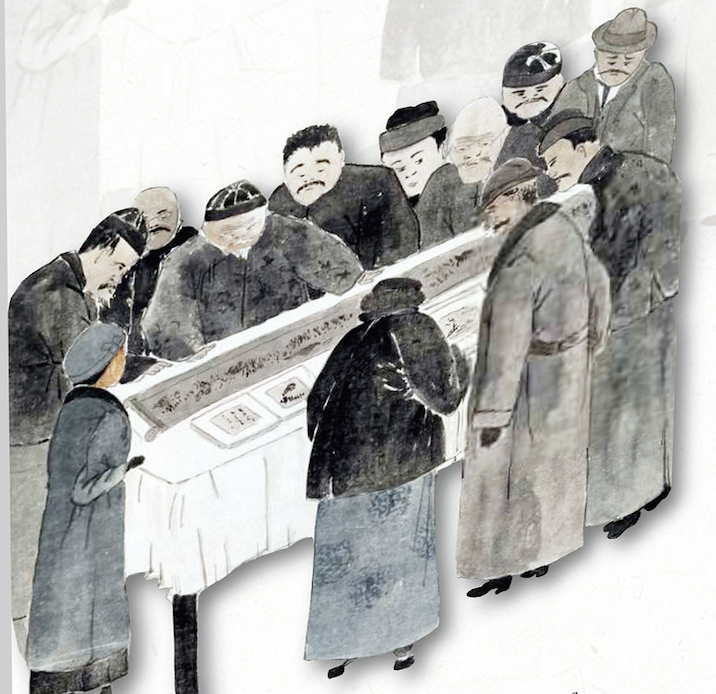PREPARE FOR SUCCESS
-Be Qualified & Be Ready
Regardless your backgrounds and educations, feeling intimidated or overwhelmed by the unfamiliar topics, theories and painting techniques concerning the study of Chinese art happens to every art professional, including myself, a trained Chinese art historian. With a Ph.D. in Chinese art from Northwestern University, MA in Asian Buddhist art and B.A in art history from Smith College, at the very beginning of my appraisal career, I have encountered some obstacles I had never imaged for a trained art historian. However, passion and dedication guided me to succeed in becoming a competent Chinese art appraiser.
Designing a road map suitable to your background is crucial. For example, after receiving my Ph.D. in Chinese art, I earned a certificate of Fine and Decorative Arts Appraisal from Pratt Institute in New York and two Accredited Senior Appraiser (ASA) designations-Asian art (ASA, 2010-2025) and Appraisal Review and Management (ARM, 2010-2025)-from American Society of Appraisers to be the best of myself. My efforts support me to serve as a competent expert witness for litigation concerning Chinese art.
Aiming high allows you to release your positive energy or ambition of being the best in the field. After established myself as a competent Chinese art appraiser, I redirected my attention to writing and education by writing articles and books. In 2020, I published a memoir, Dessert Bloom, to document my experience in art and being a Chinese art appraiser. In 2022, Wei Yang’s Guide to Chinese Painting and Calligraphy (Tianjin: Nankai University Press) was born (Available on Amazon) .
ASSESS STRENGTH & WEAKNESS
-Be Realistic & Humble
Skill is learnable if you put your heart on it. Knowing your strength and weakness clears the path for success. Developing a new expertise via incorporating your current expertise or skills would shorten your time on achieving competence. For an appraiser of fine arts, a specialty in Chinese painting might be a good fit. An expertise in European oil painting can help you understand Chinese oil paintings of 19th to 20th centuries. For those with knowledge of ceramics would find Chinese ceramics is applicable.
Assessing your limitations on skills is essential. A competent Chinese painting specialist must read a few classical and modern Chinese scripts because signature, inscription and seals on a painting shed light on authenticity. The appraisal of Chinese ceramics and jade, however, would require only an entry-level reading knowledge of Chinese scripts, because marks (reign or workshop seals) and poetic writings is minimal, and owning a few good reference books would be sufficient.
Identifying your research interest makes your study journey pleasant. It is difficult to imagine anybody would dedicate time and energy to the study of something remotely interesting. Passion plus curiosity lead to competence. Starting with a narrow focus on Chinese art is smart. Once you have master one aspect of expertise, such as painting, ceramics and jade, expanding your expertise from one form to another is natural because all forms of Chinese art is rooted in the same cultural, artistic and aesthetic system.
AIM HIGH
-Be the Best
You need a set of unique skills to be the best in the field. There is no cheating game in practice, although some "professionals" claim to have the Chinese art expertise when they don't. In reality, Chinese art specialty is an open field for the skilled to shine. Having vision for your career is the core of shaping a new expertise. Vision nourishes ambition and endorse prosperity. Gaining familiarity with the appraisal of Chinese art only scratches the surface of the expertise, because professional competence beyond a generalist’s qualifications is the backbone. To be competitive, earning a professional designation from a reputable appraiser’s organization, such as American Society of Appraisers (ASA) and Association of American Appraisers (AAA) aims for recognition in the field. Earning an Accredited Senior Appraiser designation in Appraisal Review and Management (ARM) prepares you for accepting challenging assignments, such as expert witness for insurance settlement and tax-related litigation.

